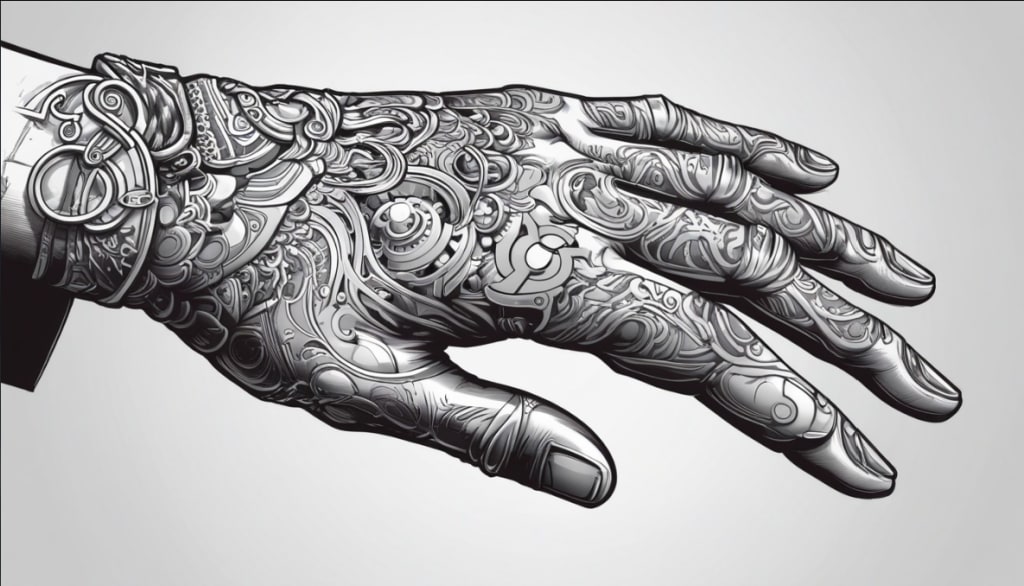The Enigma of Left-Handedness: Unraveling the Mysteries Behind Southpaws
Exploring the Science, Myths, and Evolutionary Curiosities of Left-Handed Individuals

In a predominantly right-handed world, left-handed individuals stand out as a distinct minority, comprising roughly 10% of the global population. The prevalence of left-handedness has sparked curiosity and led researchers to delve into the mysteries surrounding this unique trait. From the science behind handedness to the myths that have evolved around left-handed individuals, this article explores why some people are left-handed, unraveling the complexities that make southpaws a fascinating subject of study.
1. The Biological Basis of Handedness: Nature vs. Nurture
The question of why some people are left-handed has long been a subject of debate within the scientific community. Is left-handedness determined by genetics, or does environmental influence play a role? Research suggests that both factors contribute, with a combination of genetic predisposition and environmental influences shaping an individual's handedness.
Studies on twins have provided valuable insights into the genetic component of handedness. Identical twins, who share nearly identical genetic makeup, do not always have the same handedness. This observation implies that genetic factors alone cannot account for the prevalence of left-handedness, leaving room for environmental influences during fetal development.
2. Fetal Development and Hormonal Influences
The development of handedness begins in the womb, where environmental factors and hormonal influences come into play. Researchers have explored the role of testosterone in shaping handedness, proposing that higher levels of testosterone during fetal development may contribute to left-handedness. Studies have shown a correlation between left-handedness and exposure to higher levels of testosterone in the womb.
However, the intricate dance of genetics and hormonal influences doesn't offer a one-size-fits-all explanation. Left-handedness remains a complex trait influenced by a myriad of factors that researchers are still working to fully understand.
3. Evolutionary Perspectives: The Advantages of Handedness Diversity
Evolutionary biologists have pondered the persistence of left-handedness throughout human history. If right-handedness offers an evolutionary advantage, why hasn't it dominated the population entirely? Some theories propose that the diversity in handedness could confer specific advantages in certain situations.
One such theory suggests that the element of surprise might give left-handed individuals an advantage in combat situations. In a predominantly right-handed world, an unexpected left-handed opponent might catch adversaries off guard. While this theory remains speculative, it highlights the fascinating intersection of evolutionary forces and the persistence of left-handedness.
4. The Brain's Handedness Blueprint: Neurological Insights
Advancements in neuroscience have allowed researchers to peer into the intricacies of the brain, shedding light on the neurological basis of handedness. The brain's lateralization, where certain functions are localized to specific hemispheres, plays a crucial role in determining handedness.
In right-handed individuals, language processing is primarily localized in the left hemisphere of the brain. However, the picture is more nuanced in left-handed individuals. While a significant proportion still shows left-hemisphere dominance for language, a notable portion demonstrates right-hemisphere dominance or a more distributed pattern. This neurological variability contributes to the diversity of handedness observed in the population.
5. Cultural Perceptions and Historical Biases
Throughout history, left-handedness has been met with a mix of fascination, superstition, and, at times, discrimination. The very word "sinister" originally meant "left" in Latin, reflecting historical biases against left-handedness. Various cultures have ascribed mystical or negative connotations to left-handed individuals, perpetuating myths and misconceptions.
In more recent times, societies have become more accepting of left-handedness, recognizing it as a natural variation rather than a deviation. However, cultural perceptions continue to influence the experiences of left-handed individuals, contributing to the unique challenges they may face in a predominantly right-handed world.
6. Left-Handed Myths: Debunking Stereotypes and Superstitions
Left-handed individuals have not been immune to enduring myths and stereotypes. From the notion that left-handed people are more creative to the unfounded belief that they have shorter life expectancies, these myths persist despite lack of scientific evidence. Debunking these stereotypes is essential to fostering a more accurate understanding of left-handedness and dispelling unfounded biases.
7. The Cognitive Advantages of Left-Handedness: Unraveling the Creativity Conundrum
While some myths surrounding left-handedness lack scientific basis, recent research has explored potential cognitive advantages associated with being left-handed. Some studies suggest a link between left-handedness and enhanced creativity, proposing that the atypical wiring of the brain in left-handed individuals might contribute to divergent thinking.
However, it's crucial to approach such findings with caution, as the relationship between handedness and cognitive traits is complex and varies among individuals. Understanding these nuances is essential to appreciating the diversity of cognitive strengths within the left-handed population.
8. Nurturing Left-Handed Talents: Creating Inclusive Environments
As societal attitudes evolve, efforts to create inclusive environments for left-handed individuals have gained traction. Educational settings, in particular, are recognizing the importance of accommodating diverse learning styles associated with different handedness. From left-handed desks to teaching methods that cater to a range of preferences, fostering inclusivity benefits individuals of all handedness types.
Conclusion: Embracing Diversity in Handedness
The question of why some people are left-handed encompasses a rich tapestry of genetic, neurological, and cultural influences. From the intricacies of fetal development to the biases ingrained in historical perceptions, left-handedness invites us to explore the multifaceted nature of human diversity. As societies continue to evolve, embracing and understanding the complexities of handedness contributes to a more inclusive and enlightened perspective on what it means to be uniquely human.
About the Creator
Kei Ben
A fresh read goes a long way.
Enjoyed the story? Support the Creator.
Subscribe for free to receive all their stories in your feed. You could also pledge your support or give them a one-off tip, letting them know you appreciate their work.






Comments
Kei Ben is not accepting comments at the moment
Want to show your support? Send them a one-off tip.